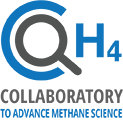Projects
Well-respected research is the cornerstone of our work. Our projects are focused on building long-term understanding and filling in gaps in the scientific body of knowledge that informs emissions reduction strategies.
Results will be reviewed by an external Scientific Advisory Board, and our team will work to disseminate the results and launch external engagement strategies to broadcast our findings to the broader research community.
All of this is made possible by combining resources into a single unified approach that leverages all datasets, avoids redundancy, and maximizes efficiency.

